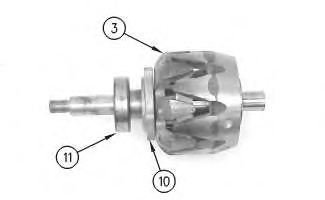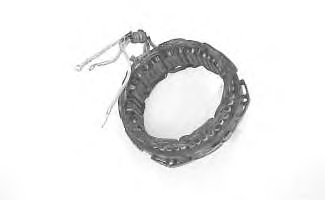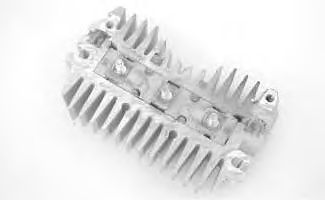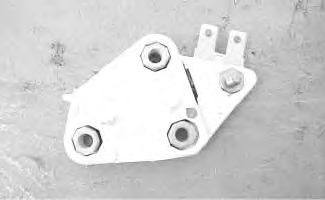Rotor
|
|
|
|
|
|
| Illustration 1 | g00632386 |
The rotor provides a magnetic field. The rotor rotates on a shaft. Therefore, this alternator is called a rotary magnetic field alternator. A rotor consists mainly of the following parts: pole core (magnetic pole), field coil and shaft.
The rotor contains the field coil. When current flows in the field coil, one side of the core is magnetized. This side becomes the “N” pole. The other side becomes the “S” pole. With this form (pawl pole), all poles are magnetized by one field coil.
Stator
|
|
|
|
|
|
| Illustration 2 | g00628076 |
The stator consists of a stator core and stator coil. The stator is supported by the front and rear frames of the alternator. The stator core is made of a number of thin iron plates. The stator has many slots on the inner surface. The slots accommodate the stator coil. Three independent coils are provided. The coils generate AC voltage during rotation of the rotor. A hydraulic press is used to insert the stator into the front frame. This arrangement allows heat to easily dissipate through the frame. Cooling efficiency is increased.
Pulley
These alternators are usually equipped with a pulley with two slots. Tighten the pulley nut to 102 ± 7 N·m (75 ± 5 lb ft).
Frame
The frame supports the stator and the rotor. The frame also provides mounting points in order to mount the alternator on the engine. Holes for ventilation are provided on all sides of the frame for efficient cooling. The rectifier, and the regulator are fastened to the rear end frame by screws. The stator is pressed into the front end frame.
Rectifier
|
|
|
|
|
|
| Illustration 3 | g00651224 |
|
Rectifier Bridge 34-SI |
|
|
|
|
|
|
|
| Illustration 4 | g00651236 |
|
Rectifier Bridge 30-SI |
|
The rectifier is a one-piece design. The rectifier changes the three-phase AC into direct current.
Regulator
|
|
|
|
|
|
| Illustration 5 | g00628079 |
The regulator controls the output of the alternator. The regulator limits the alternator voltage to a preset value by controlling the field current. The regulator operates electronically in order to turn on the voltage across the field winding. The regulator then switches off the voltage. The switching can occur at a low rate such as 10 times in one second. The switching can occur at a high rate such as several thousand times in one second.




